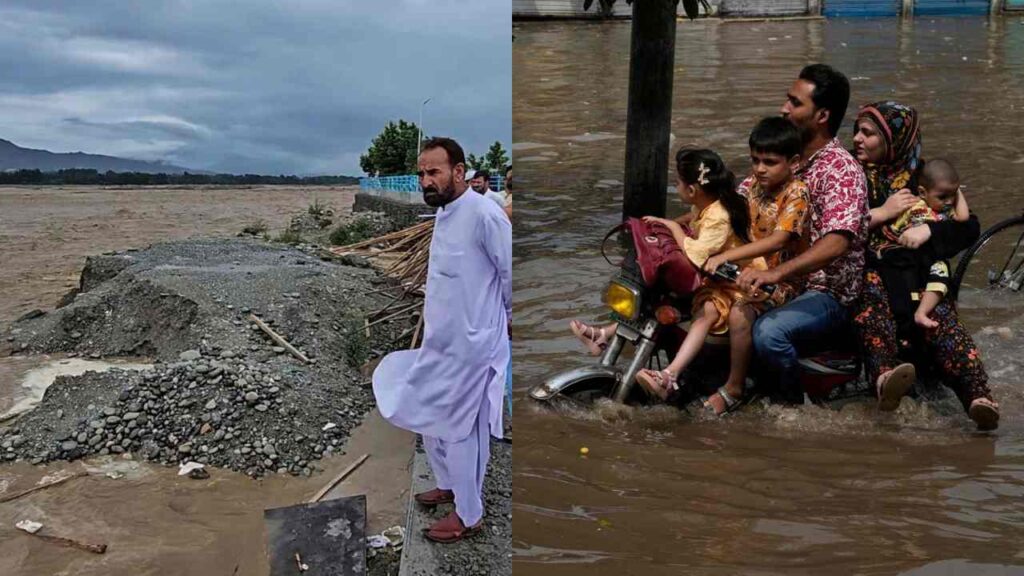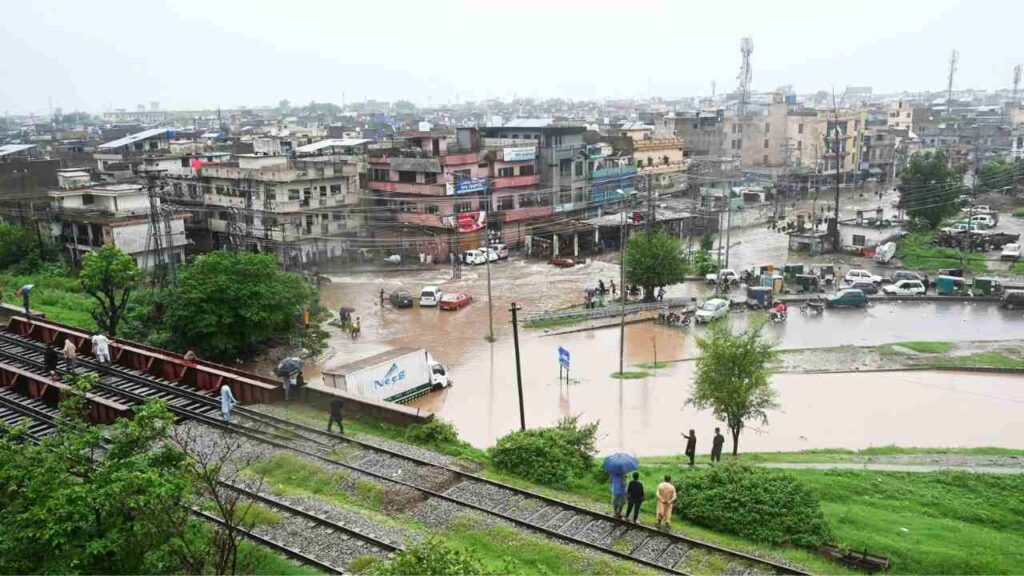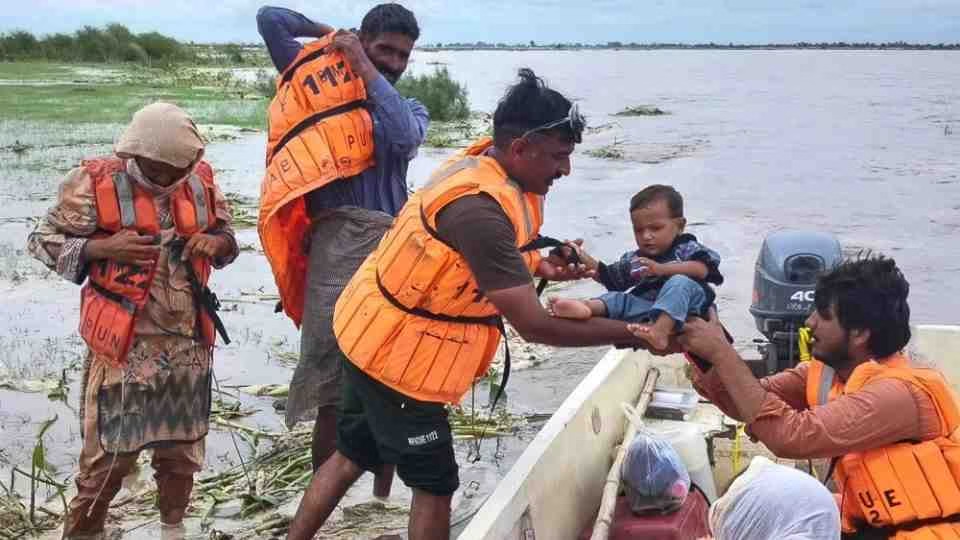Army Engineers Race to Clear Roads as Weather Warnings Signal More Destruction Ahead
ISLAMABAD/PESHAWAR – Pakistan faces an escalating monsoon disaster as rescue operations intensify across flood-devastated regions, with officials warning that more severe weather could worsen the already catastrophic situation.
The death toll from this monsoon season’s flooding has reached at least 660 people nationwide since late June, according to the National Disaster Management Authority (NDMA). Khyber Pakhtunkhwa (KP) has borne the heaviest losses with 392 fatalities, followed by Punjab (164), Gilgit Baltistan (32), Sindh (29), Balochistan (20), Azad Jammu and Kashmir (15), and Islamabad (8).

Critical Rescue Operations Underway
Pakistan Army Engineers Corps personnel are working around the clock to restore access to cut-off communities. In a breakthrough overnight operation, they successfully reopened the Pir Baba bypass to all traffic and cleared debris from the Pir Baba bazaar in Buner district. Three major clearance points have been established on the road to Gokand village, while heavy machinery has restored the crucial Aluch-Poran road connection.
Urban Search and Rescue teams, supported by heavy equipment, continue operations in the hardest-hit areas of Bishoni and Qadir Nagar. Tragically, five bodies have been recovered from a stream near Bishoni, highlighting the human cost of this natural disaster.
Buner District Bears Devastating Losses
The mountain district of Buner has emerged as the epicenter of destruction, with over 200 lives lost since Friday’s catastrophic cloudbursts. These rare meteorological phenomena, which dump more than 100mm of rain in a single hour, unleashed unprecedented devastation. Friday morning alone recorded over 150mm of rainfall in the region.
Flash floods triggered by the extreme weather have also caused significant casualties in Peshawar, Mardan, Swabi, and Abbottabad. In Swabi, at least 11 people perished in Monday’s flash floods. Across mountainous regions, entire communities have watched helplessly as homes, vehicles, and possessions were swept away by torrential waters.
Weather Warnings Signal Further Danger
The Pakistan Meteorological Department (PMD) has issued alarming forecasts for Tuesday, predicting widespread rain, wind, and thundershowers across all major regions including Khyber Pakhtunkhwa, Punjab, Sindh, Balochistan, Kashmir, Gilgit-Baltistan, and Islamabad.
Heavy to very heavy rainfall is expected to create flash flood conditions in waterways throughout KP, Kashmir, Gilgit-Baltistan, the Potohar region, Dera Ghazi Khan, Koh-e-Suleman, and northeastern Balochistan. Urban flooding poses immediate threats to low-lying areas of northeastern Punjab, Islamabad/Rawalpindi, Peshawar, Nowshera, and southeastern Sindh.
NDMA Chairman Lieutenant General Inam Haider Malik delivered a sobering warning about two additional rain spells expected between August 21 and September 10, cautioning that further cloudbursts could dramatically intensify the disaster.
Recent 24-hour rainfall measurements underscore the severity: Rawalakot recorded 110mm, Murree 88mm, Chakwal 84mm, and Takht Bhai 80mm, while Peshawar Airport measured 54mm.
Educational Institutions Forced to Close
Recognizing the imminent danger, the Khyber Pakhtunkhwa Higher Education Department has ordered the closure of all colleges and universities in the Counter Zone from August 19-25. The unprecedented decision prioritizes protecting students, faculty, and staff from the risks of cloudbursts, flash floods, and landslides.
Provincial Higher Education Minister Meena Khan Afridi announced that academic activities will continue through online platforms during the closure, while the government develops relief measures to minimize educational disruption.
A damage assessment reveals extensive destruction to educational infrastructure. Government Degree College Lalqila in Lower Dir lost its entire 300-foot boundary wall, while water supply systems at Government Degree College Wari in Upper Dir sustained severe damage. In Shangla, Chakisar College’s 3,000-foot boundary wall completely collapsed, and multiple institutions across Swat suffered structural damage.
Government Mobilizes Financial Support
Political leaders have responded with immediate financial commitments. KP Chief Minister Ali Amin Gandapur announced salary donations: one month from his office, 15 days from cabinet members, seven days from provincial lawmakers, two days from senior officers, and one day from junior staff.
Prime Minister Shehbaz Sharif pledged federal government support and committed one month’s salary from the entire federal cabinet to relief efforts. Federal Climate Minister Musadik Malik assured that all roads would reopen within 24 hours, emphasizing the Centre’s commitment to work “without discrimination” alongside provincial governments.
Climate Change Intensifies Pakistan’s Vulnerability
Chief meteorologist Zaheer Babar explained that Pakistan is experiencing increasingly frequent and intense extreme weather events. The country’s mountainous terrain creates deadly conditions when heavy downpours transform into flash floods, often catching downstream communities unprepared.
Climate change serves as a primary driver of this volatility, but human activities compound the destruction. Construction along riverbanks, waterway constriction, and improper waste disposal restrict natural water flow, amplifying flood damage.
Pakistan ranks among the world’s most climate-vulnerable nations, repeatedly devastated by extreme weather events. The 2022 monsoon floods, which submerged one-third of the country and claimed approximately 1,700 lives, demonstrated the enormous scale of the challenge facing this South Asian nation.
As rescue operations continue and weather warnings persist, Pakistan confronts the harsh reality of its climate vulnerability while working desperately to save lives and restore communities torn apart by nature’s fury.






